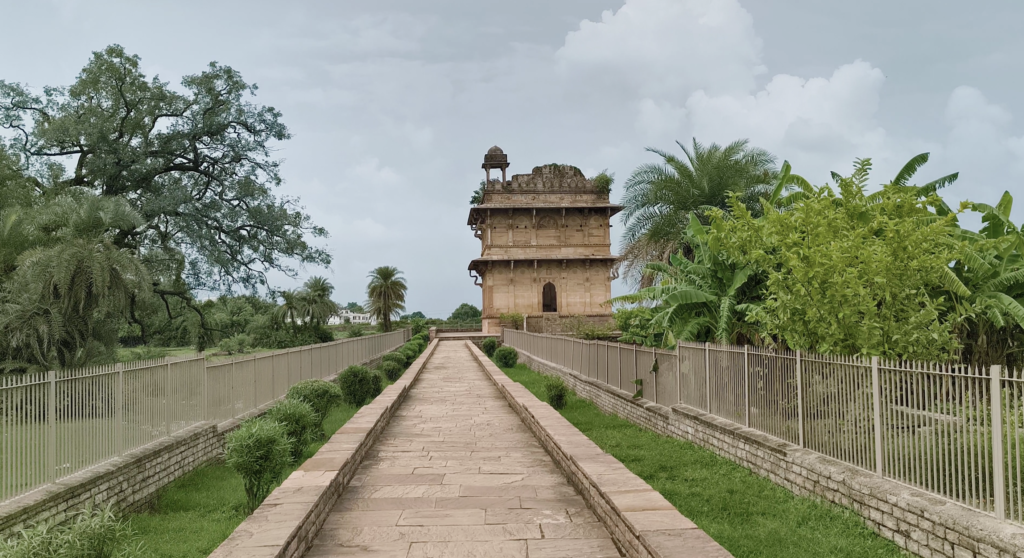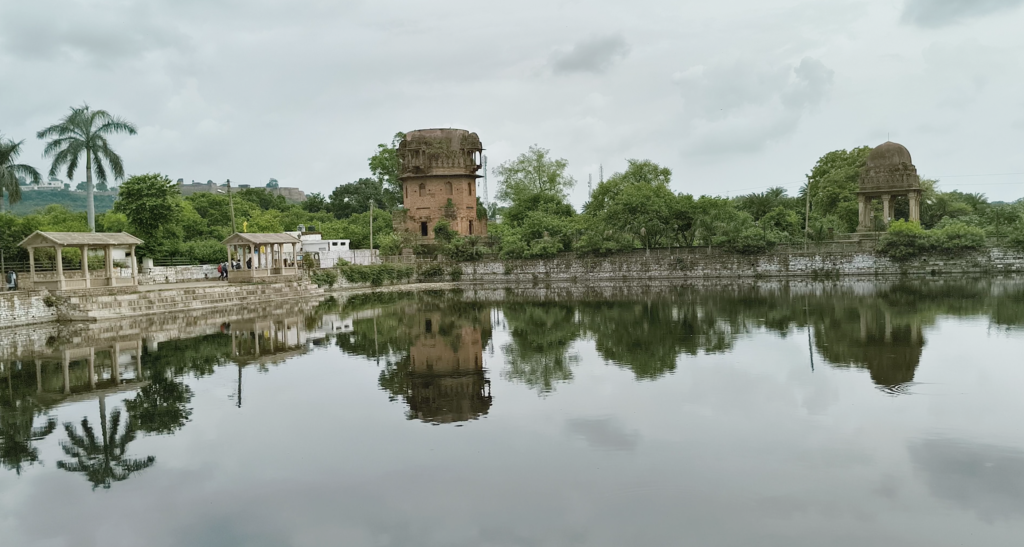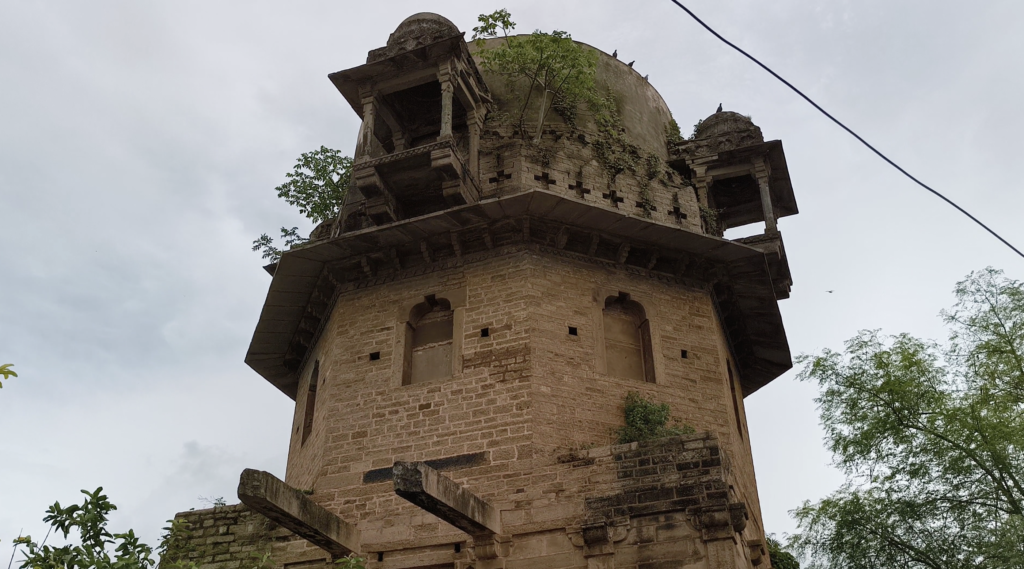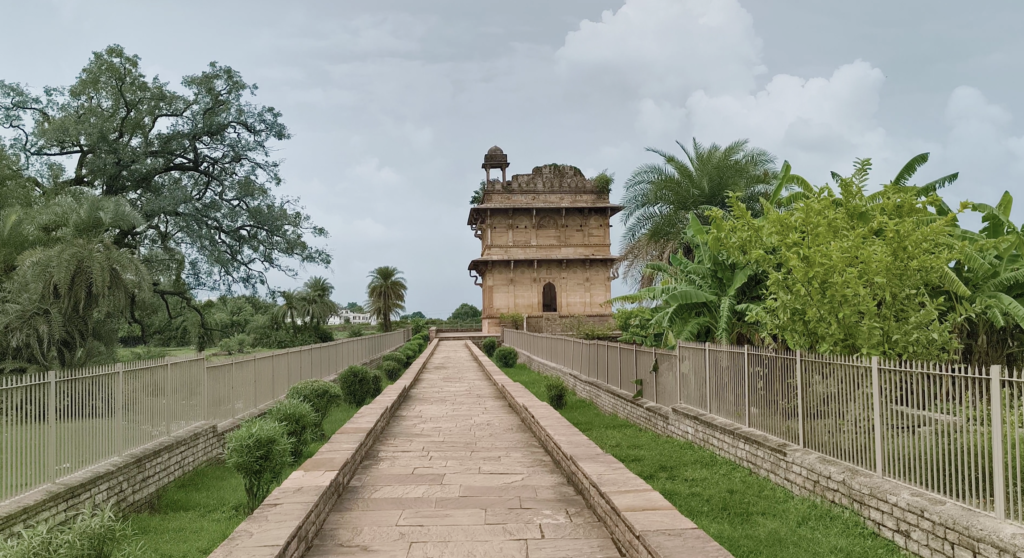Nestled in the small village of Ikkeri in Karnataka’s Shimoga District, the Aghoreshwara Temple is an architectural marvel with deep historical roots. Built in the 16th century by Dodda Sankanna Nayaka of the Keladi dynasty, this temple reflects the artistic grandeur and spiritual reverence of the Nayak rule. Located just 5 km from the bustling town of Sagara, Ikkeri was once the second capital of the Keladi Nayaks, who ruled the Malnad region from 1499 to 1763. A visit to the Aghoreshwara Temple offers a fascinating journey through time, myth, and artistic mastery.
The Grandeur of the Entrance
As you approach the Aghoreshwara Temple, the structure’s unique layout begins to reveal itself. The temple faces north, with the main entrance leading through a square pavilion known as the Nandi Mantapa. Inside this mantapa is an intricately decorated Nandi (Shiva’s bull), facing the temple with a serene gaze. The Nandi idol, polished to a smooth finish, is adorned with ornaments—chains of bells and garlands—that add a sense of divine grace to the scene. The outer walls of the mantapa are also alive with relief carvings of dancers, drummers, and various figures, offering a glimpse into the lives and culture of the Keladi people.
One remarkable feature of the mantapa’s roof is its four corner minarets, a rare Indo-Islamic touch that speaks to the temple’s blend of cultural influences.
A Glimpse Inside: The Temple’s Pillared Hall
After passing through the Nandi mantapa, visitors are greeted by a flight of seven steps flanked by two massive, beautifully adorned elephant sculptures leading up to the main entrance. The temple also has side entrances from the east and west, inviting visitors to explore the richly decorated pillared hall from multiple angles.
Inside the hall, the floor bears three life-sized relief carvings of prostrating figures identified by inscriptions in Kannada. They represent Sadashiva Nayaka, a former king, along with Joyisara Timmanna and Biligiriyanna, prominent officials in the Keladi court. These inscriptions offer a personal touch to the grandeur, grounding it in real people from history who dedicated themselves to the temple.
The Sanctum and Shivalinga
Within the temple’s sanctum, a shivalinga rests on a Shakti pitha, its base surrounded by 32 intricate carvings of female deities or “shakti.” A delicate, translucent Nandi sits before the linga, adding an ethereal glow to the sanctum’s heart. Although a shivalinga now resides in the sanctum, it once housed a highly detailed idol of Aghoreshwara—a powerful depiction of Shiva in human form, with one head, three eyes, and 32 arms, each holding a different item. This idol stood as a symbol of divine strength until it was destroyed by invading forces from the Bijapur Sultanate.
Other Deities and Shrines
The Aghoreshwara Temple is home to several other shrines, each dedicated to a unique deity. There are sanctuaries for six-faced Shanmukha, Ganapathi, Kalabhairava, and Mahishasuramardhini. The temple’s main sanctum is topped by a striking tower, or shikara, built in a blend of architectural styles. To the west, a shrine devoted to Parvati, also known as Akhilandeshwari Amma, completes the divine family worshipped within this sacred space.
Artistic Marvels of the Outer Walls
The temple’s exterior walls are a masterpiece of ornamental carving. Arranged in three layers, the walls feature a series of miniature temple towers, pillars, squatting lions, birds, and the menacing Keerthimukha, a symbol meant to ward off evil. Nearly twenty perforated windows with decorative arches interspersed with figure sculptures add a dynamic touch to the walls, allowing soft light to filter through into the interior.
On the eastern side of the temple, a carved pranala (drain) directs Abhisheka water used in rituals into a small tank, creating a serene space for offerings. Below this, there is an intricate carving of Indra on his divine elephant, Airavata, while the western wall depicts Varuna, the god of waters, seated on a mythical Makara.
A Visit to the Ikkeri Aghoreshwara Temple
A journey to the Aghoreshwara Temple in Ikkeri is an experience of spiritual and historical immersion. This temple is best visited during the cooler months, when one can fully enjoy the serenity of the surrounding landscape. A visit to Ikkeri isn’t just about witnessing the artistic beauty of the temple but also about connecting with the deep spiritual legacy of the Keladi Nayaks.
The Aghoreshwara Temple stands as a symbol of the Keladi dynasty’s devotion and resilience, a place where Hindu and Indo-Islamic styles merge to create a unique and timeless sanctuary. Whether you’re drawn to the temple for its historical significance, its spiritual atmosphere, or its artistic mastery, this hidden gem in Karnataka promises a memorable encounter with India’s cultural heritage.
Watch full video on Youtube





